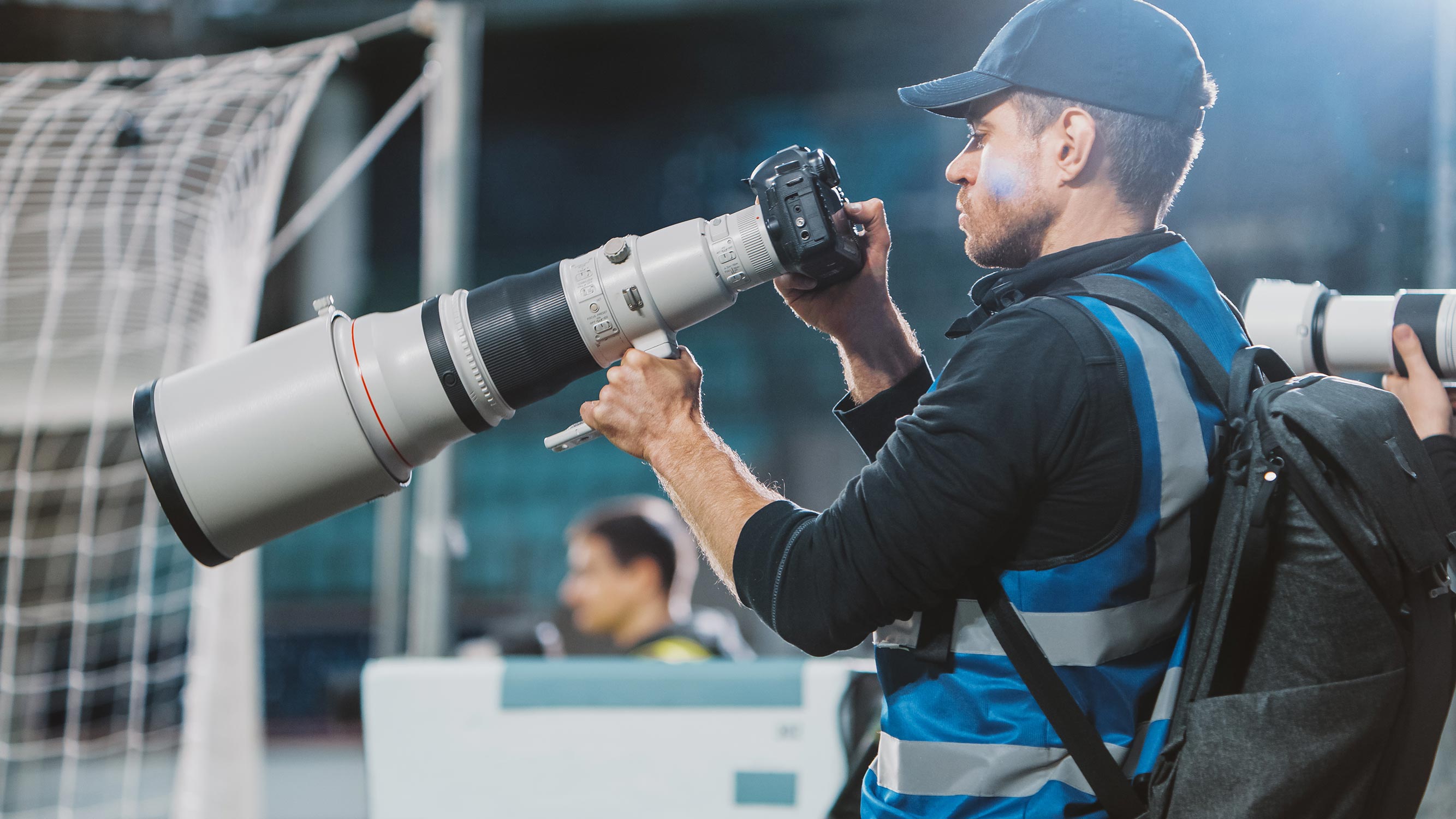Sports photographers work in an exciting, fast-paced field that captures the thrill and intensity of athletic events. From professional sports arenas to high school stadiums and local fields, sports photographers are on the frontlines, documenting key moments, emotions, and action-packed scenes. However, imagine you’re on the sidelines of a high-stakes football game, your eye glued to the viewfinder, capturing the defining moment. Suddenly, a stray player crashes into your setup, toppling your expensive gear. In a split second, you’re facing a costly repair—or worse, a lawsuit. This dynamic environment comes with unique risks and challenges that make sports photographer insurance not just an option but a necessity.
Sports Photographer Risks
As a sports photographer, you’re constantly on the move to get the perfect shot. Whether you’re positioned along the sidelines at a football game, near the track at a racing event, or courtside at a basketball match, you’re navigating spaces where players, equipment, and other media personnel are in constant motion. This high-energy setting presents a number of risks, including:
- Injury to Others: The action in sports can be unpredictable. A stray ball or a fast-moving player could collide with your equipment or knock over a tripod, potentially injuring athletes, coaches, or spectators. In such cases, you could be held liable for medical expenses or damages, making liability insurance essential.
- Property Damage: Your setup could accidentally damage property at the venue. For example, a light stand might fall and break a glass panel, or you might unintentionally cause damage to sensitive equipment at a sports facility. Liability insurance helps cover these unexpected incidents, protecting you from costly out-of-pocket expenses.
- Equipment Theft or Damage: Sports events often involve bustling crowds, and managing your gear in such settings can be challenging. Cameras, lenses, and other equipment are at risk of being stolen, knocked over, or damaged in the chaos of the event. Repairing or replacing high-end photography gear can be expensive, so having insurance specifically for your equipment is crucial.
Why Liability Insurance is Essential for Sports Photographers
- Protects Against Third-Party Claims: Liability insurance covers bodily injury or property damage that occurs due to your equipment or presence at the event. If an athlete trips over your camera bag or a bystander gets injured by your setup, liability insurance can cover the resulting medical expenses or legal fees. This protection ensures you’re not financially burdened by accidents that can happen in fast-paced environments.
- Required by Many Venues: Many sports venues and organizations now require photographers to have liability insurance before granting access to events. This requirement helps protect all parties involved and demonstrates your professionalism as a sports photographer.
- Peace of Mind: Knowing that you have liability insurance allows you to focus on capturing those critical moments without constantly worrying about the potential for accidents or mishaps. If you’ve ever had a close call where a player almost collided with your gear, you know how nerve-wracking it can be. Insurance provides peace of mind, allowing you to work confidently and safely.
Why Sports Photographers Need Equipment Insurance
Sports photography requires high-quality gear to capture fast-moving action. Cameras, lenses, tripods, and accessories represent a significant investment and are essential to your work. Here’s why equipment insurance is vital for sports photographers:
- Protection Against Accidental Damage: At any sports event, your gear is at risk of accidental damage. A ball might hit your camera, or you might drop a lens while moving quickly to get a shot. Equipment insurance covers the cost of repairs or replacement, ensuring you can continue working without a financial setback.
- Coverage for Theft: Sports venues can be crowded, and keeping track of all your gear in such environments is challenging. Equipment insurance provides coverage if your gear is stolen, allowing you to replace it and get back to work without major delays.
- Replacement Cost Coverage: With equipment insurance, you are not limited to the current market value of your gear. If a camera or lens needs to be replaced, the insurance pays for the cost of a new model, even if your existing gear has been discontinued. This coverage is crucial for maintaining the quality of your work. Remember limited warranties that come with the purchase of a camera, such as a Canon or Nikon, only cover manufacturing defects. There is no coverage if the camera is accidentally damaged unlike our Gear and Equipment coverage.
- Coverage for Rented Equipment: Sometimes, you might need to rent specialized gear for specific events. Unlike other photographer insurance, our equipment insurance extends to rented equipment, preventing the need to buy additional coverage at the time of rental.
Tips for Sports Photographers Managing Risk On-Site
While insurance is crucial, it’s also helpful to take proactive steps to minimize risks during sports events:
- Keep a safe distance from the field or play area whenever possible.
- Label your gear with your contact information to deter theft.
- Invest in a sturdy, impact-resistant camera bag to protect your equipment.
These tips, combined with the right insurance coverage, help ensure you can focus on your work without unnecessary worries.
Key Takeaways
Sports photography is rewarding but comes with inherent risks that can threaten your business and livelihood. Liability insurance protects you from accidents that could lead to costly lawsuits, while equipment insurance safeguards your valuable gear against theft and damage. Together, they provide comprehensive coverage, allowing you to focus on capturing the action without worrying about the potential financial fallout of an unexpected incident.
It’s not just about protecting your business; it’s about ensuring you can keep doing what you love—capturing the heart of the event. Don’t let an accident or theft stop you from doing what you do best—get insured and stay in the game.








